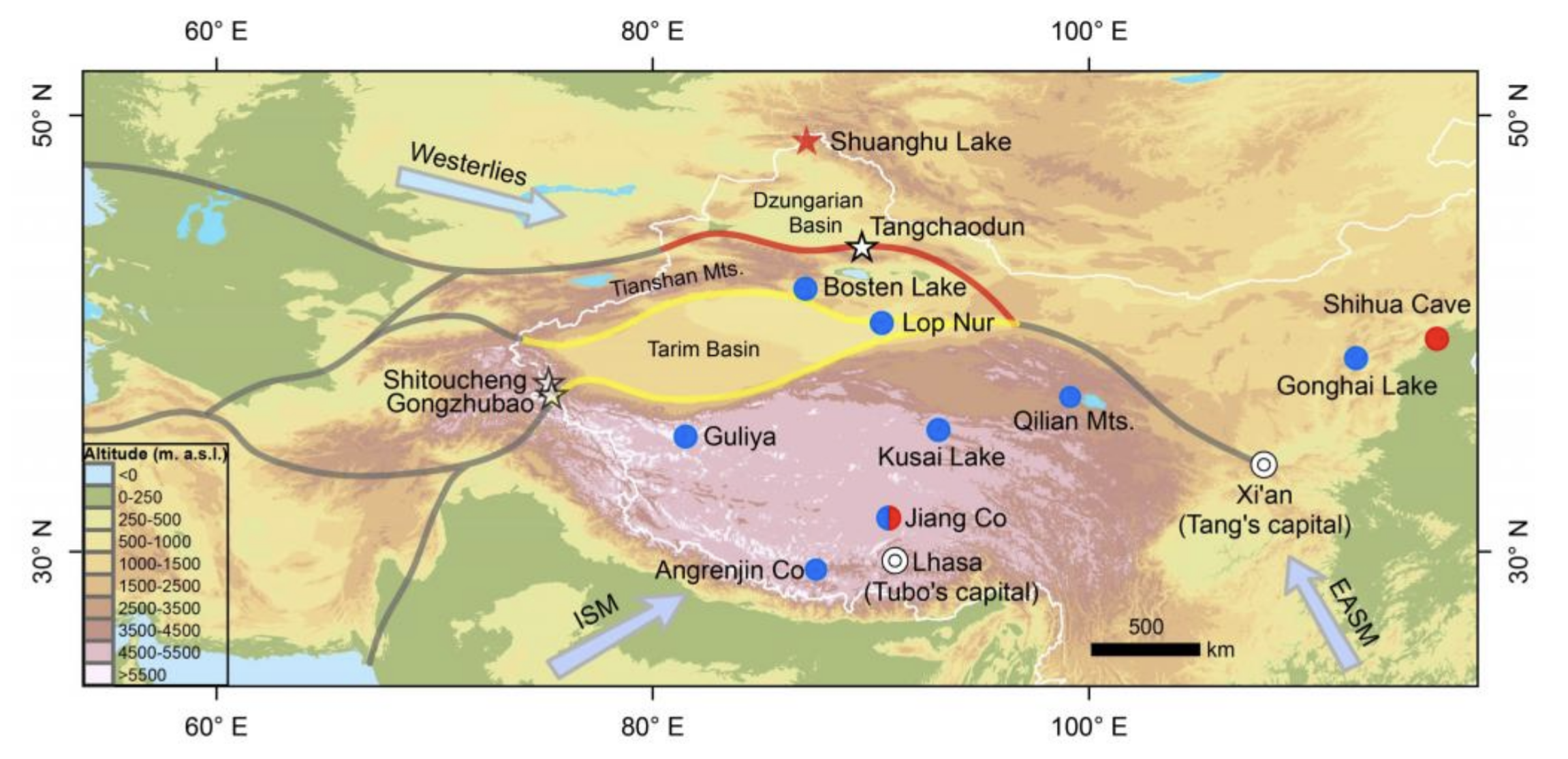News Excerpt:
The Silk Road, the great patchwork of paths that connected the Atlantic seaboard of Europe with the Pacific coast of Asia, saw a change in its main route as a result of climate change, a study by Chinese scientists has found.

More About News:
- The main route, which usually went around the basin of the Tarim river, shifted northwards after the local climate changed.
- A few hundred years down the line, the climate changed again. However, the route was still preferred due to geopolitical developments, which had the roots in the second change of climate.
- According to the researchers, the northward shift of the Silk Road is a valuable case study for examining the relationship between climate change and the spatial evolution of human societies.
Early History of the Silk Road:
- The Silk Road has an over 1,500-year-old history, with contacts between Europe and China dating back even earlier.
- It is conventionally dated to the 2nd century BCE when Emperor Wu of the Han Dynasty dispatched his diplomat Zhang Qian to the 'Western Regions' (today's Xinjiang and farther west).
- Han China was under threat from the Xiongnu, a powerful tribal confederation linked to the Huns who later terrorized Europe under Attila.
- Qian's mission was to build relations with the Yuezhi and Wusun, who were enemies of the Xiongnu.
- A branch of the Yuezhi would later form the Kushan Dynasty of North India, Pakistan, and Afghanistan.
- Qian traveled to the 'Western Regions' and is credited as the 'Father of the Silk Road'.
- The Tarim Basin route was gradually established after Zhang Qian's mission by Emperor Wu in the 2nd century BCE.
- Caravans travelling from China's capital Xian used this route, skirting around the Tarim Basin enclosed by the Tianshan, Kunlun, and Pamir mountains with the Takla Makan Desert within.
- Caravans travelled west to the Levant and Anatolia, transferring goods to ships in Mediterranean ports to reach Western Europe.
Shift to the Northern Silk Road Route:
- During ~420-850 CE, the caravans no longer used the route skirting the Tarim Basin.
- Instead, they began using the northern slopes of the Tianshan mountains in an area known as the Junggar Basin in northern Xinjiang, historically called Dzungaria.
- This new "Northern (NN) route" along the northern Tianshan slopes was established several hundred years later and regarded as a replacement for the previous Tarim Basin route.
- The rise of this Northern Silk Road route promoted the development of the Turco-Sogdian cultures and connected the Chinese dynasties with nomadic regimes in Central and West Asia like the Khazar Empire.
- It facilitated communications and commerce across the vast region from the Pacific to the Atlantic oceans.
The key points about the research methods
- To test their hypothesis, researchers wanted to find variations in temperature and hydroclimate over the last two millennia.
- High-quality temperature records over the last two millennia were rare, with existing records showing large discrepancies over 1-1000 CE.
- Researchers used a new method analyzing chironomid (lake fly) remains from Shuanghu Lake in the Junggar Basin to reconstruct paleotemperatures over 2000 years.
- The scientists carbon-dated three ancient Silk Road cities in Xinjiang: Shitoucheng, Gongzhubao, and Tangchaodun.
- The experts reasoned that besides environmental stresses, geopolitical conflicts may also affect changes in trade routes.
- To explore this, they compiled war records from the Tarim Basin to distinguish the impacts of climate change and geopolitical conflicts on Silk Road route shifts.
- Findings on 420-600 CE:
-
- During 420-600 CE, the Northern and Southern Dynasties period in China, temperatures reduced greatly diminishing meltwater and precipitation.
- The subsequent water shortage triggered the shift of the Silk Road route from the Tarim Basin to the northern Tianshan slopes with more abundant water.
- Findings on 600-850 CE:
- From 600-850 CE under the Tang Dynasty, the climate became warm and wet.
- However, the northern route did not shift back south due to conflicts between the Tibetan Empire and Tang Dynasty in the Tarim Basin region.
- This reflects the indirect impact of climate change, as the Tibetan Empire's rise was related to a favorable climate on the Tibetan Plateau.
Conclusions:
- The findings revealed two distinct ways climate change drove the spatial evolution of human civilization along the Silk Road routes.
- It demonstrated the flexibility of societal responses adapting trade routes to climate changes and geopolitical conflicts.


